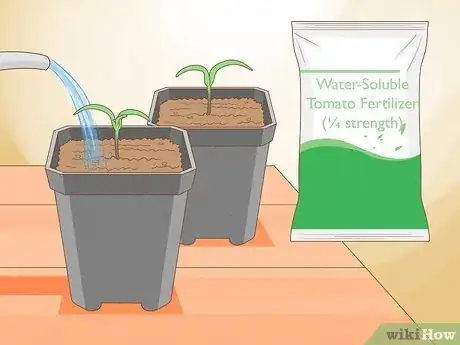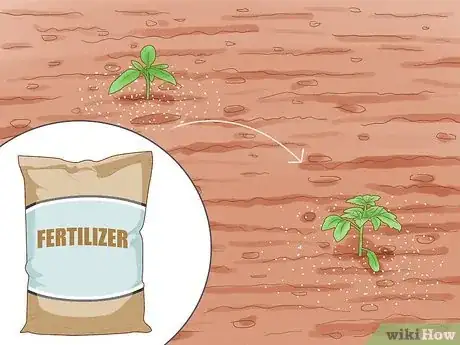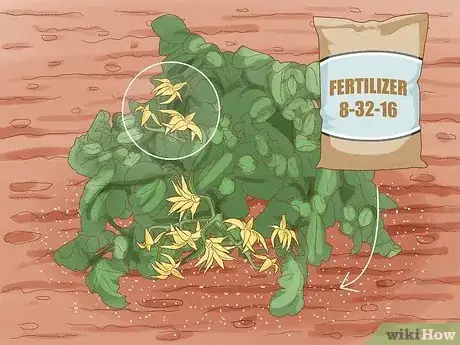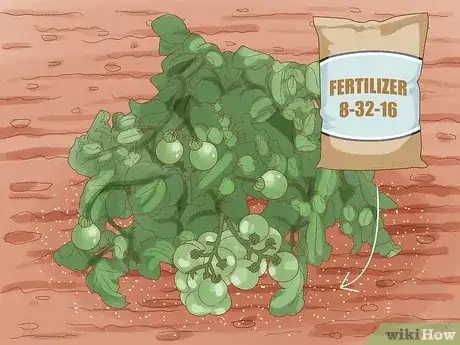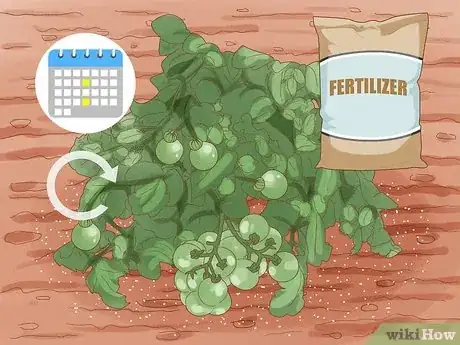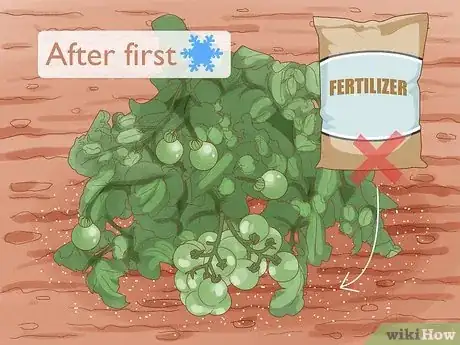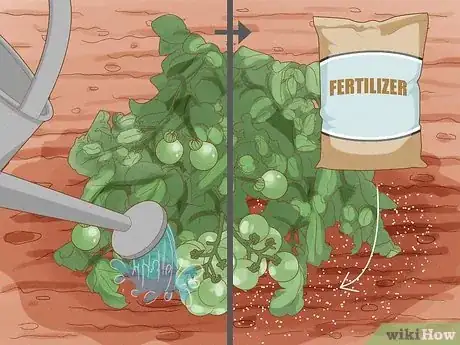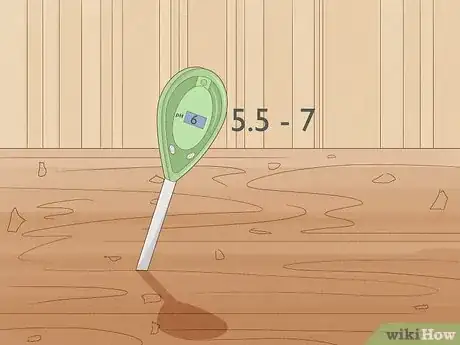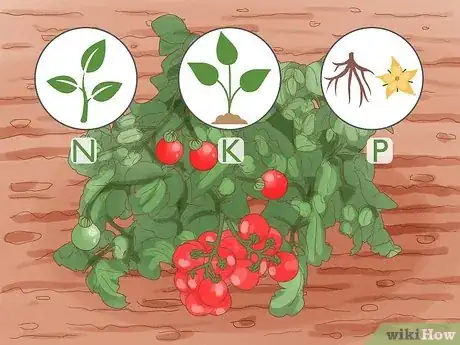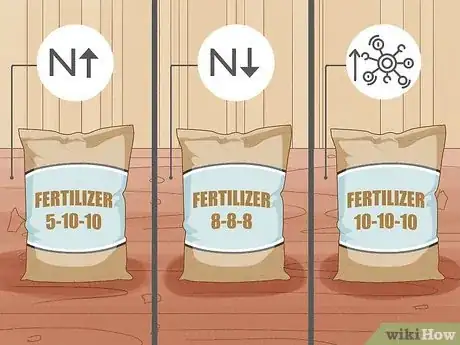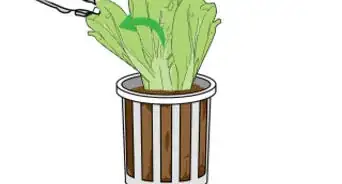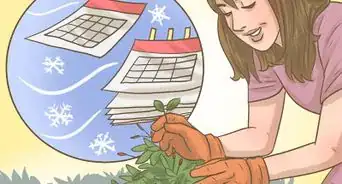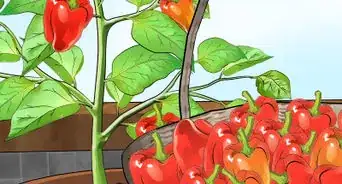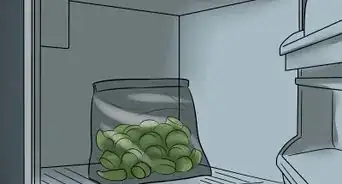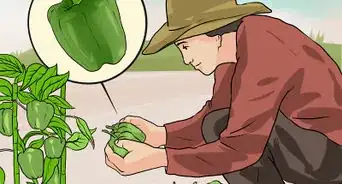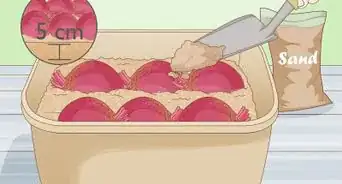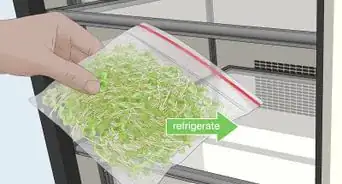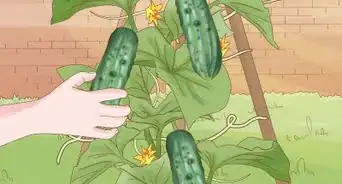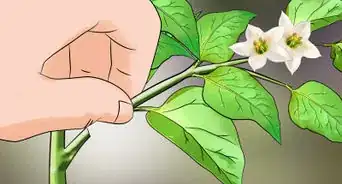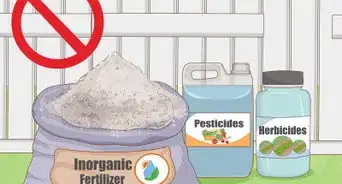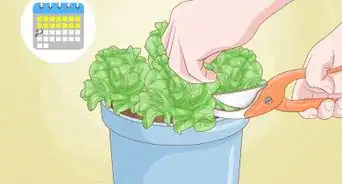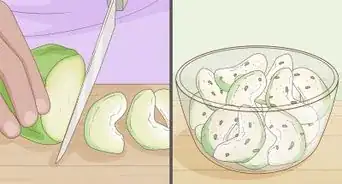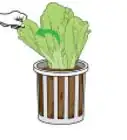This article was co-authored by Olivia Choong and by wikiHow staff writer, Dan Hickey. Olivia Choong is a Plant and Gardening Specialist and the Owner of The Tender Gardener. With more than six years of experience, she specializes in gardening, permaculture, and self-sufficient and low-impact living practices. Her work has been featured in media outlets such as The Straits Times and Channel NewsAsia (CNA). Olivia holds a Bachelor of Mass Communications in PR and Journalism from Murdoch University.
There are 11 references cited in this article, which can be found at the bottom of the page.
This article has been viewed 2,619 times.
Getting the right nutrients at the right time is essential for a healthy, happy tomato plant, but how often is often enough? Tomatoes are a hardy annual that feed heavily on nutrients, so knowing when and how much to fertilize can be the difference between a delicious harvest and a disappointing turnout. We’ve put together a comprehensive guide to fertilizing your tomato plants, from choosing a fertilizer and monitoring their nutrient levels to knowing exactly when to fertilize. If you’re ready to have the best tomato garden ever, read on!
Steps
When to Fertilize Tomato Plants
-
1Add compost to the soil before planting. Organic matter like compost and manure improves soil drainage.[1] It’s especially important to add some if you don’t plan on using synthetic fertilizer later since compost is rich in nitrogen and other nutrients your tomatoes need. To add compost, till a hole about 12 inches (30 cm) deep and add about 4 inches (10 cm) to 6 inches (15 cm) of compost or manure to your garden bed. Fill the rest of the hole with garden soil.[2]
-
2Fertilize your indoor seedlings when you see a sprout. Seedlings grow quickly and need nutrients while they germinate. Use a weak (¼ strength) water-soluble tomato fertilizer at this stage. The extra nutrients will help strengthen your plant before moving it outside.[5]
- There’s some disagreement about whether indoor seedlings really need fertilizer. Wait until they have 2-3 sets of leaves before fertilizing, unless you see signs of malnourishment like yellowing leaves.
- Look for crystallized salt on the soil surface. This is a sign you’re over-feeding or over-fertilizing the plant.
Advertisement -
3Fertilize again when you move your seedlings outside. Replant your seedlings outdoors somewhere protected from the wind with lots of sun. At this stage, they’ll need lots of phosphorus to encourage flowering and root growth—choose a phosphorus fertilizer for tomatoes from your local gardening center and apply according to the instructions. If you prepared your soil with compost or manure earlier, you won’t need to add any more nitrogen.[6]
- If you added lots of nutrient-rich materials like banana peels and bones to your compost, you probably don’t need any fertilizer yet.
-
4Add more fertilizer when flowering starts. Your plant needs plenty of nitrogen and potassium during this phase. Use a fertilizer with at least twice as much potassium as nitrogen—it will encourage your plant to be strong, healthy, and extra flowery. An 8-32-16 or 6-24-24 (or similar) could work here.[7]
- Follow the instructions on the fertilizer bag since the amount and application can vary by product. Generally, you want to scratch your fertilizer into the soil about 6 inches (15 cm) away from the plant to avoid damage.
- If you’re adding more compost in place of fertilizer, spread 3 to 4 inches (7.6 to 10.2 cm) of compost on top of your soil around the base of the plant and let it sit.
- If the bottom leaves of your tomato plant are turning yellow, it probably means the plant needs more nitrogen.
-
5Add phosphorus when the first fruit is the size of a golf ball. Remember to keep the fertilizer about 6 inches (15 cm) away from the plant to prevent runoff damage. If you added compost earlier in the season, your plant’s nitrogen levels should still be OK. An 8-32-16 fertilizer or similar should be enough at this point.[8]
-
6Continue fertilizing every 1-2 weeks. It’s important to keep your plants fed while they’re growing fruit. Fertilize lightly about every other week (some plants may need it every 10-14 days, others might be fine with every 2-3 weeks). Continue making sure to water your plant thoroughly before fertilizing.[9]
- Tomato plants might need more potassium during this phase. Switch fertilizers or add organic potassium sources, like chopped up banana peels, to your soil.
-
7Stop fertilizing after the first frost. When your plant first shows signs of frost damage, the season is done. Tomato plants are susceptible to injury at temperatures between 0 °C (32 °F) and 5 °C (41 °F). The damage will look like puckering leaves, a growth stunt, or darkening of the leaves and stems. The damage may not be noticeable until damaged areas turn brown and wilt in the days after the first frost.[10]
- If you’re growing determinate tomatoes, you can stop fertilizing after the fruits start ripening and change their color.[11]
-
8Water your plants before you fertilize them. If the plant isn’t thoroughly watered before fertilizing, it will absorb too much direct fertilizer and burn. Water slowly and deeply near the stem of the plant, allowing enough time for the water to enter the soil. It’s best to water early in the day when it’s cooler outside.[12]
- Tomato plants generally need 1 inch (2.5 cm) to 2 inches (5.1 cm) of water per week.
- Early in the season, watering once a day is enough. As it gets hotter, you might need to water twice a day.
- Always water the plant before fertilizing, never after.
How to Choose the Right Fertilizer
-
1Test your soil. The nutrient content of your soil determines the fertilizer you need. Before planting, test your soil for pH balance and nitrogen, phosphorous, and potassium levels. Home test kits are available at most gardening centers, or a local county extension office can perform a thorough test for a low fee.[13]
- A pH level of 5.5 to 7 is ideal for tomato plants.
- Each U.S. state’s cooperative extension service assists farmers and gardeners with multiple services including soil testing. Tests are typically between $15-20.[14]
- If you can’t get a test done and you haven’t had issues with tomato plants before, assume you have balanced soil.
-
2Determine which nutrients your soil needs. Tomatoes need lots of NPK—nitrogen, phosphorus, and potassium. These are the macronutrients that most plants need to grow healthily and create a good harvest. If your soil lacks one of these nutrients, you will need a fertilizer that compensates. For example, soil that’s low in nitrogen would need fertilizer with a higher nitrogen concentrate.[15]
- Nitrogen encourages leaf growth and lusciousness.
- Potassium helps the plant grow quickly.
- Phosphorus assists with root growth and development as well as flowering.
- Tomatoes also need micronutrients in smaller quantities like calcium, magnesium, zinc, and boron.
-
3Select a fertilizer with the right proportions of NPK to balance your soil. Fertilizers list these proportions as a series of 3 numbers, like 10-10-10 or 8-10-5. This is the percentage of NPK in the fertilizer, respectively. For example, an 8-10-10 fertilizer is 8% nitrogen, 10% phosphorus, and 10% potassium.[16]
- If your soil is balanced or high in nitrogen, choose a fertilizer that has more phosphorus than nitrogen, like a 5-10-10.
- If you’re lacking nitrogen, go with something balanced like a 10-10-10 or an 8-8-8. Too much nitrogen makes leafy plants with few tomatoes.
- If your soil is already rich in natural fertilizers, you may not need a synthetic blend. If you want to add some, choose a fertilizer with balanced NPK levels, like a 10-10-10.
References
- ↑ Olivia Choong. Plant & Gardening Specialist. Expert Interview. 3 September 2021.
- ↑ https://extension.umn.edu/vegetables/growing-tomatoes#soil-testing%2C-fertilizer-and-mulch-173060
- ↑ https://extension.umn.edu/yard-and-garden-news/ask-extension-do-fertilizers-help-or-hurt-plants
- ↑ Olivia Choong. Plant & Gardening Specialist. Expert Interview. 3 September 2021.
- ↑ http://www.tomatodirt.com/tomato-seedlings.html
- ↑ http://www.tomatodirt.com/tomato-seedlings.html
- ↑ https://ofags.com/when-to-fertilize-tomatoes/
- ↑ https://extension.umn.edu/vegetables/growing-tomatoes#soil-testing%2C-fertilizer-and-mulch-173060
- ↑ https://www.rhs.org.uk/vegetables/tomatoes/grow-your-own
- ↑ http://www.omafra.gov.on.ca/english/crops/facts/info_tomtemp.htm
- ↑ https://ofags.com/when-to-fertilize-tomatoes/
- ↑ https://extension.umn.edu/vegetables/growing-tomatoes#watering%C2%A0-141310
- ↑ https://extension.umn.edu/vegetables/growing-tomatoes#soil-testing%2C-fertilizer-and-mulch-173060
- ↑ https://www.bobvila.com/articles/best-fertilizer-for-tomatoes/
- ↑ https://ofags.com/best-fertilizer-for-tomatoes/
- ↑ https://oldham.ca.uky.edu/files/determing_how_much_fertilizer_to_apply_2017.pdf
- ↑ https://www.bobvila.com/articles/best-fertilizer-for-tomatoes/


